
The Bronze Star Medal (BSM) is a United States Armed Forces decoration awarded to members of the United States Armed Forces for either heroic achievement, heroic service, meritorious achievement, or meritorious service in a combat zone.
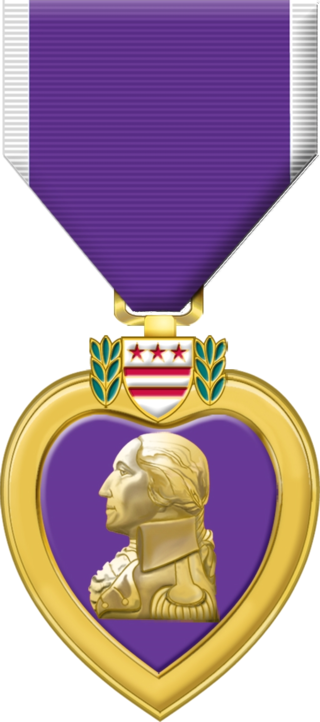
The Purple Heart (PH) is a United States military decoration awarded in the name of the President to those wounded or killed while serving, on or after 5 April 1917, with the U.S. military. With its forerunner, the Badge of Military Merit, which took the form of a heart made of purple cloth, the Purple Heart is the oldest military award still given to U.S. military members. The National Purple Heart Hall of Honor is located in New Windsor, New York.

The Silver Star Medal (SSM) is the United States Armed Forces' third-highest military decoration for valor in combat. The Silver Star Medal is awarded primarily to members of the United States Armed Forces for gallantry in action against an enemy of the United States.
The Commendation Medal is a mid-level United States military decoration presented for sustained acts of heroism or meritorious service. Each branch of the United States Armed Forces issues its own version of the Commendation Medal, with a fifth version existing for acts of joint military service performed under the Department of Defense.

The Military Cross (MC) is the third-level military decoration awarded to officers and other ranks of the British Armed Forces, and formerly awarded to officers of other Commonwealth countries.
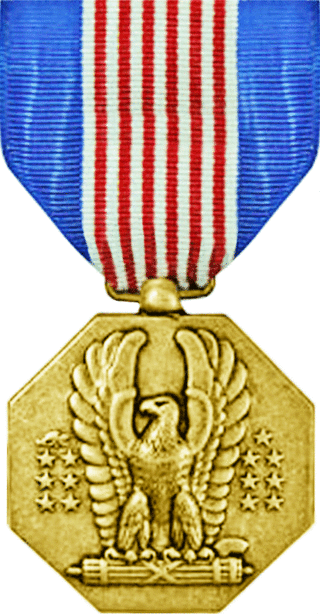
The Soldier's Medal is an individual decoration of the United States Army. It was introduced as Section 11 of the Air Corps Act, passed by the Congress of the United States on July 2, 1926. The Soldier's Medal is equivalent to the Navy and Marine Corps Medal, the Air and Space Forces' Airman's Medal, and the Coast Guard Medal. Prior to the creation of the Airman's Medal in 1960, airmen were awarded the Soldier's Medal.
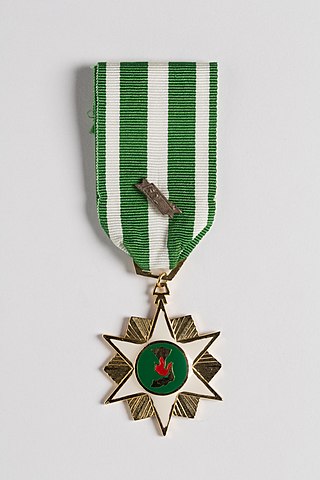
The Republic of Vietnam Campaign Medal, also known as the Vietnam Campaign Medal, is a South Vietnamese military campaign medal which was created in 1949, and awarded to French military personnel during the First Indochina War. During the Vietnam War, the South Vietnamese government awarded the Republic of Vietnam Campaign Medal with Device to members of the South Vietnamese military for wartime service and on March 24, 1966, to members of the U.S. military for support of operations in Vietnam. In May 1966, other allied foreign military personnel became eligible for the award.
The Indian Campaign Medal is a decoration established by War Department General Orders 12, 1907. The medal was retroactively awarded to any soldier of the U.S. Army who had participated in the American Indian Wars against the Native Americans between 1865 and 1891.
The American Defense Service Medal was a military award of the United States Armed Forces, established by Executive Order 8808, by President Franklin D. Roosevelt, on June 28, 1941. The medal was intended to recognize those military service members who had served on active duty between September 8, 1939, and December 7, 1941.
The Medal for Humane Action is a military award of the United States Armed Forces which was created by an act of the United States Congress on July 20, 1949. The medal recognizes those military service members who performed extended duty in support of the Berlin Airlift. The medal is based on the design of the Berlin Airlift Device.

The Military Medal (MM) was a military decoration awarded to personnel of the British Army and other arms of the armed forces, and to personnel of other Commonwealth countries, below commissioned rank, for bravery in battle on land. The award was established in 1916, with retrospective application to 1914, and was awarded to other ranks for "acts of gallantry and devotion to duty under fire". The award was discontinued in 1993, when it was replaced by the Military Cross, which was extended to all ranks, while other Commonwealth nations instituted their own award systems in the post war period.

The KirtiChakra is an Indian military decoration awarded for valour, courageous action or self-sacrifice away from the field of battle. It may be awarded to civilians as well as military personnel, including posthumous awards. It is the peacetime equivalent of the Maha Vir Chakra. It is second in order of precedence of peacetime gallantry awards, comes after Ashoka Chakra and before Shaurya Chakra. Before 1967, the award was known as the Ashoka Chakra, Class II.
In the siege of Jadotville[ʒa.do.vil] in September 1961, a small contingent of the Irish Army's 35th Battalion, designated "A" Company, serving as part of the United Nations Operation in the Congo were besieged in the mining town of Jadotville by Katangese forces loyal to the secessionist State of Katanga. The siege took place during the seven-day escalation of a stand-off between ONUC and Katangese forces during Operation Morthor. Although the contingent of 155 Irish soldiers repelled attacks by a 3,000-man Katangese force for five days while an undersized relief force of Irish, Indian and Swedish troops attempted to reach them, they were eventually forced to surrender having run out of ammunition and water. "A" Company was subsequently held as prisoners of war for approximately one month. The Irish forces inflicted approximately 1,300 casualties on the Congolese force, with no deaths amongst "A" Company.
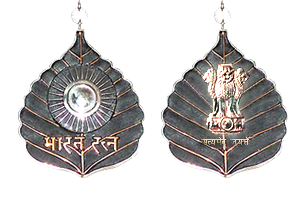
The Indian honours system is the system of awards given to individuals for a variety of services to the Republic of India. The categories of awards are as follows:
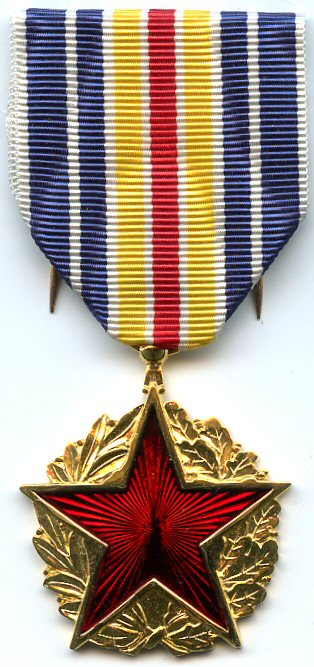
The Medal for the War Wounded was originally a mere insignia in the form of an ribbon awarded for wounds received in the line of duty while facing an enemy. The insignia was established by the law of 11 December 1916, based on an idea by the nationalist writer Maurice Barrès. Although originally established as a temporary measure, the insignia survived for a century in some form or another. It could be awarded to wounded soldiers, prisoners of war, to World War II deportees and internees from the French resistance and to soldiers wounded in more recent conflicts. A variety of unofficial medals in the form of a red enamelled star suspended by the same ribbon appeared very early on and although tolerated for wear by the authorities, were not official until recently.

The Secretary of Defense Medal for the Defense of Freedom is a decoration established to acknowledge civilian employees of the United States Department of Defense (DoD) who are killed or wounded in the line of duty.
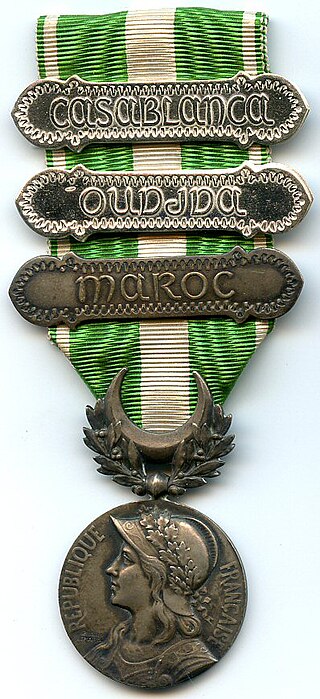
The Morocco commemorative medal (1909) was a French military campaign medal. It was established by the law of 22 July 1909 for award to soldiers participating in the Second Franco-Moroccan War under the command of general Hubert Lyautey.

The Médaille de la Gendarmerie nationale is a French military decoration created on 5 September 1949 on proposition of the then Minister of Defence, mister Paul Ramadier. It was originally created in a single grade for award to officiers and NCOs of the Gendarmerie nationale who were cited in the orders of the entire service. Such a citation in the orders of the entire service, and all potential subsequent ones would be denoted by a grenade device on the ribbon as the medal could, and can still only be awarded once to any potential recipient. The medal could also be exceptionally awarded to persons not members of the service for important services rendered to the gendarmerie or for help during special missions. These presentations were made without a citation and thus without any ribbon device.
The Sarvottam Jeevan Raksha Padak is a civilian lifesaving award presented by the Government of India. Established on 30 September 1961, the award was originally called the Jeevan Raksha Padak, Class I.

The Siachen Glacier Medal is awarded for service in the Siachen conflict along India's northern border with Pakistan. Awarded to the Indian Air Force for Operation Meghdoot, in support of activities in support of troops serving in the Siachen Glacier area since April 1984.













